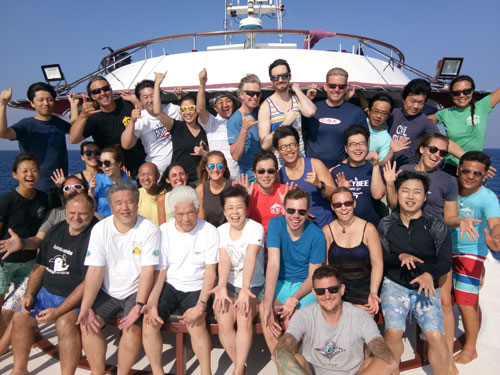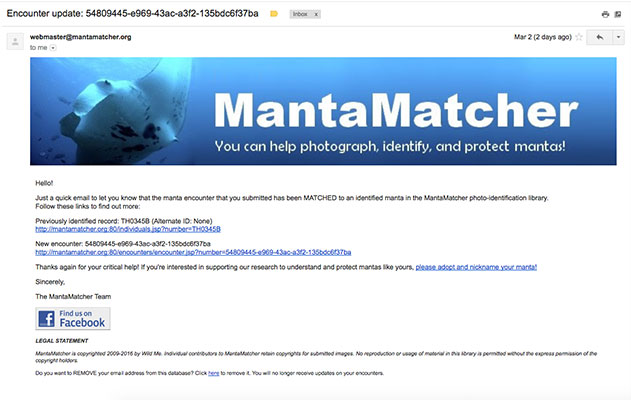Manta – The large flappy thing, tell me more…
During this Similans Liveaboard we had the pleasure of hosting Anna Flam of the Marine Megafauna Foundation. A team of outstanding people dedicated to the research & protection of Marine Megafauna. Anna stayed on board for the duration of the trip hoping to capture Manta evidence and was always on hand for questions and more importantly the passing on of her knowledge.
Unfortunately we did not encounter any Manta’s on this trip but nevertheless the staff and guests where all treated to a presentation from Anna detailing the importance (and the plight) of our large winged under-water fliers.
Anna’s main job within the Marine Megafauna Foundation is to co-ordinate all global Manta sightings and run them through a database full of identification shots.
But wait, how do we identify a Manta?
Manta Species
It’s more than just a large flappy thing that we can point a camera at and cheer through the regulator. Until very recently it was believed that there are two varieties of Manta, the Manta Biostris (Giant Manta) & the Manta Alfredi (Reef Manta), it has since come to light that there is a third species in the Caribbean (we await further information on this species).
Identifying Markings
To identify which species you are looking at, the best and simplest way is to check the belly. Each Manta has an array of unique markings/ spots and much like the left side of a Whale Shark or your thumb it can be used to identify the individual and its species.
We can see that both species have markings similar to one another but with some subtle differences. Notice that the Alfredi has spots across the full width of it’s torso and wings whereas the Birostris does not. The birostris spot patterns tend to be limited to the belly area and not beyond the gills or onto the wings. Another distinguishing mark on the Birostris is the greying or darkening of the trailing edges of it’s wings.
How you can help
When you are lucky enough to dive with these majestic animals try to get some identifying shots. Not only does this feel great and a bit of kudos among other divers but you can submit your photo and details to mantamatcher so that Anna can use the extensive database and software to see if your Manta has been highlighted before and in what location.
A Big Blue Example
Over the Christmas trip I was leading we where fortunate enough to have a sighting. Armed with a few photographs and some video footage I sent it to mantamatcher for recognition and to assist in their research. A few days ago I received this email….
Great news but I was rather hoping it had not been seen before until I opened the links showing where and when it has been seen. Interestingly enough, only last month it was identified in Myanmar waters….
Feel Good Factor
Not only do you get the buzz from diving with these beautiful animals but also the follow up details of how you are helping with the research, education and subsequent protection of them. If you would like to know more just ask any of the Big Blue dive staff on your next liveaboard or contact Manta Matcher via their webpage.
Her’s hoping that you all get to experience diving with them. Don’t forget to load up those photo’s when you do!!






